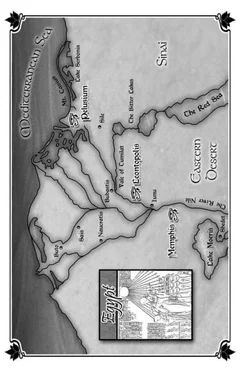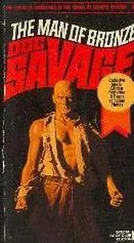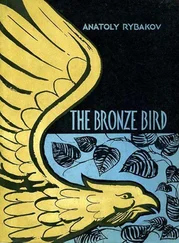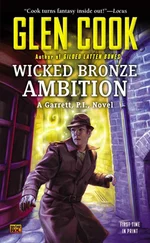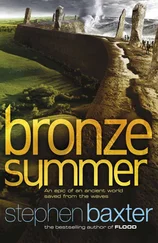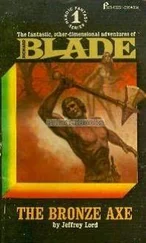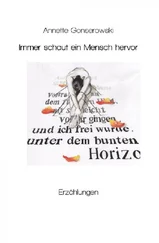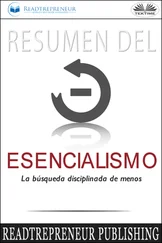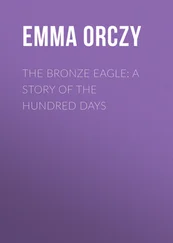Scott Oden - Men of Bronze
Здесь есть возможность читать онлайн «Scott Oden - Men of Bronze» весь текст электронной книги совершенно бесплатно (целиком полную версию без сокращений). В некоторых случаях можно слушать аудио, скачать через торрент в формате fb2 и присутствует краткое содержание. Жанр: Исторические приключения, на английском языке. Описание произведения, (предисловие) а так же отзывы посетителей доступны на портале библиотеки ЛибКат.
- Название:Men of Bronze
- Автор:
- Жанр:
- Год:неизвестен
- ISBN:нет данных
- Рейтинг книги:3 / 5. Голосов: 1
-
Избранное:Добавить в избранное
- Отзывы:
-
Ваша оценка:
- 60
- 1
- 2
- 3
- 4
- 5
Men of Bronze: краткое содержание, описание и аннотация
Предлагаем к чтению аннотацию, описание, краткое содержание или предисловие (зависит от того, что написал сам автор книги «Men of Bronze»). Если вы не нашли необходимую информацию о книге — напишите в комментариях, мы постараемся отыскать её.
Men of Bronze — читать онлайн бесплатно полную книгу (весь текст) целиком
Ниже представлен текст книги, разбитый по страницам. Система сохранения места последней прочитанной страницы, позволяет с удобством читать онлайн бесплатно книгу «Men of Bronze», без необходимости каждый раз заново искать на чём Вы остановились. Поставьте закладку, и сможете в любой момент перейти на страницу, на которой закончили чтение.
Интервал:
Закладка:
Hathor
An Egyptian goddess popular throughout the nation's long history. Hathor was the protectress of women and the patron of love and joy, song and dance. When threatened, though, Hathor could be as ferocious as a lioness protecting her young. Artists depicted the goddess as a woman with cows' ears or as a cow.
Hem-ne jer
(Egyptian "god's servant".) Egyptian priests of the lower rank. The hem-ne jer were allowed access to the inner sanctuary as part of their allotted duties.
Hieratic
(Greek hieratikos, "priestly".) A cursive form of hieroglyphic Egyptian used in day-to-day writing. It was regularly employed for business documents, legal texts, letters, and records. Hieratic was written on papyrus with a reed brush.
Hieroglyphs
(Greek hieros giuphe, "sacred carvings".) The pictorial writing of the ancient Egyptians that was as much an artistic medium as it was a way of imparting knowledge. Though developed sometime before 3100 BCE, the hieroglyphic symbols and signs remained comparatively unchanged for three and a half millennia.
Ancient Egyptian was based on a consonantal alphabet of twentyfour characters (vowels were never written), bearing more than a passing similarity to such Semitic language alphabets as Arabic. Hieroglyphic writing combined signs that represented an object or concept (called an ideogram) with signs that represented alphabetic sounds (called a phonogram); single signs could combine as many as two, three or four consonants, and there were signs called determinatives that hinted at the meaning of a word. Still, despite their apparent chaos, hieroglyphs were concise and strictly regulated as to grammar and syntax. They could be written in rows and read from either direction or in columns and read from top to bottom. The symbols representing human or animal figures normally faced toward the beginning of an inscription. Hieroglyphs, as their name infers, were reserved for religious texts, monumental inscriptions, or as part of the decorative scheme for a tomb. See hieratic.
Hoplites
The heavy infantrymen of the Greek world, hoplites began their history as part-time citizen-soldiers; men up to middle age who could afford the cost of arms and armor were required to serve as a condition of citizenship in many city-states. They trained in early spring for the summer campaign season, then disbanded and returned home for the harvest and winter.
Hoplites derived their name from hopla, a Greek word for their heavy offensive and defensive equipment: a circular oak-andbronze shield — called an aspis (pl. aspides) — weighing close to twenty pounds, a bronze breastplate, greaves, Corinthian helmet (q.v.), a stout eight-foot spear, and an iron sword. All told, the hopla weighed in at sixty to seventy pounds. Nothing quite like it existed anywhere else in the Mediterranean, and foreign rulers were quick to capitalize on that fact by hiring Greek mercenaries to fight their wars. The hoplites serving in Egypt, the Men of Bronze, were drawn mainly from the Aegean islands and the coast of Asia Minor (Ionia and Caria). See panoplia and phalanx.
Horus
The falcon-headed son of Isis and Osiris who personified the might and majesty of Pharaoh. Horns battled Seth (q.v.) for the right to rule the world of the living, and their ceaseless enmity epitomized the struggle between light and dark, good and evil. Despite losing an eye in combat, Horns proved ultimately victorious and became Horu-Sema-Tawyto the Egyptians — Horns, Uniter of the Two Lands. See uadjet.
House of Life
(Egyptian Per-Ankh.) An institution in Egyptian society that is poorly understood by modern scholars. On the surface, the House of Life served as a scriptorium, a training ground for scribes, and a depository for religious and secular texts. But it was also a place where leading priests and scholars conducted research — astronomical, medical, and magical — and a focal point for higher learning. Little is known of its organization or bureaucracy; even its associations with the temples is vague, but it is possible that one existed in every town of any size. In Men of Bronze, I have assigned an additional task to the House of Life by making it the administrative nerve center of Pharaoh's army, a rally point for the scribes, physicians, and priests of the battle train.
Hypostyle hall
Greek term for a room containing numerous pillars. In Egyptian architecture, it is applied to the forest of stone columns between the open courts and the inner sanctum of a temple. In most eras, the columns were carved and painted to resemble lotus or papyrus stalks, symbolizing the vegetation that grew around the primordial Mound of Creation, which was itself represented by the inner sanctuary.
Ineb-hedj
"The White Walls." Egyptian name for the fortress at Memphis.
Inundation
The annual flooding of the Nile caused by rains in the highlands of tropical Africa. Upriver, at Aswan, the flood began in late June; it reached Memphis by the end of September, crested, and receded by the following April. The floods brought rich black silt to the fields, renewing their ability to produce crops. The Inundation varied from year to year; too low a flood meant famine, too high brought devastation and loss of life to the villages along the riverbank. A whole corps of priests were devoted to keeping meticulous watch on water levels, offering sacrifices to Hapi, patron god of the Nile, and praying for a perfect Inundation.
Isis
(Egyptian Eset) The most beloved goddess of the ancient Egyptian pantheon, whose cult survived into Greek and Roman times. Isis was the archetypical wife and mother, a healer and nurturer who also possessed formidable powers of magic, which she used in the service of mankind. She was depicted in temple reliefs as a woman wearing either a throne on her head (the spelling of her name in Egyptian), or a sun disk set between the horns of a cow.
Iunu
(Egyptian "Pillar".) An Egyptian city northeast of Memphis, the cult center for the worship of Ra (q.v.). The Greeks knew it as Heliopolis. It is located in a suburb of modern Cairo.
Ka
An individual's spirit or life force that left the body at the moment of death and made the journey through the underworld to the Halls of Judgement (q.v.), seeking immortality. Once the ka achieved entry into the Gardens of Amenti (q.v.), it still maintained a vital link to its preserved body. It could return to the tomb and partake of the offerings of family and loved ones, the gifts of food and drink, the adornments and pleasure items; or, the ka could activate the ushabti (q.v.) figures to comply with whatever demands the gods might make on the deceased.
Kedar
The ancient name of the north Arabian desert, as far south as Yathrib (modern Medina). The rulers of Kedar grew wealthy off the incense trade with south Arabia. At the time of Men of Bronze, Kedar was nominally under Egyptian suzerainty, though in reality it operated as an independent principality. The story of their pact with Persia is given in Herodotus, 111 7–9.
Khnum
(Egyptian "Moulder".) The ram-headed god of the island of Yeb (q.v.), near Egypt's border with Nubia. It was Khnum, according to myth, who shaped humanity from clay on his potter's wheel. Artists depicted Khnum as a ram-headed man with corkscrew horns, wearing plumes, the solar disk and uraeus (q.v.).
Krypteia
A Spartan institution, the krypteia functioned as a kind of secret police, ritualistically terrorizing the vast number of slaves ("helots") that comprised the Spartan state. Their murders were condoned each year in a formal declaration of war against the helots.
Читать дальшеИнтервал:
Закладка:
Похожие книги на «Men of Bronze»
Представляем Вашему вниманию похожие книги на «Men of Bronze» списком для выбора. Мы отобрали схожую по названию и смыслу литературу в надежде предоставить читателям больше вариантов отыскать новые, интересные, ещё непрочитанные произведения.
Обсуждение, отзывы о книге «Men of Bronze» и просто собственные мнения читателей. Оставьте ваши комментарии, напишите, что Вы думаете о произведении, его смысле или главных героях. Укажите что конкретно понравилось, а что нет, и почему Вы так считаете.
